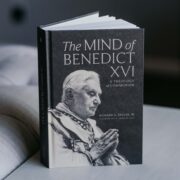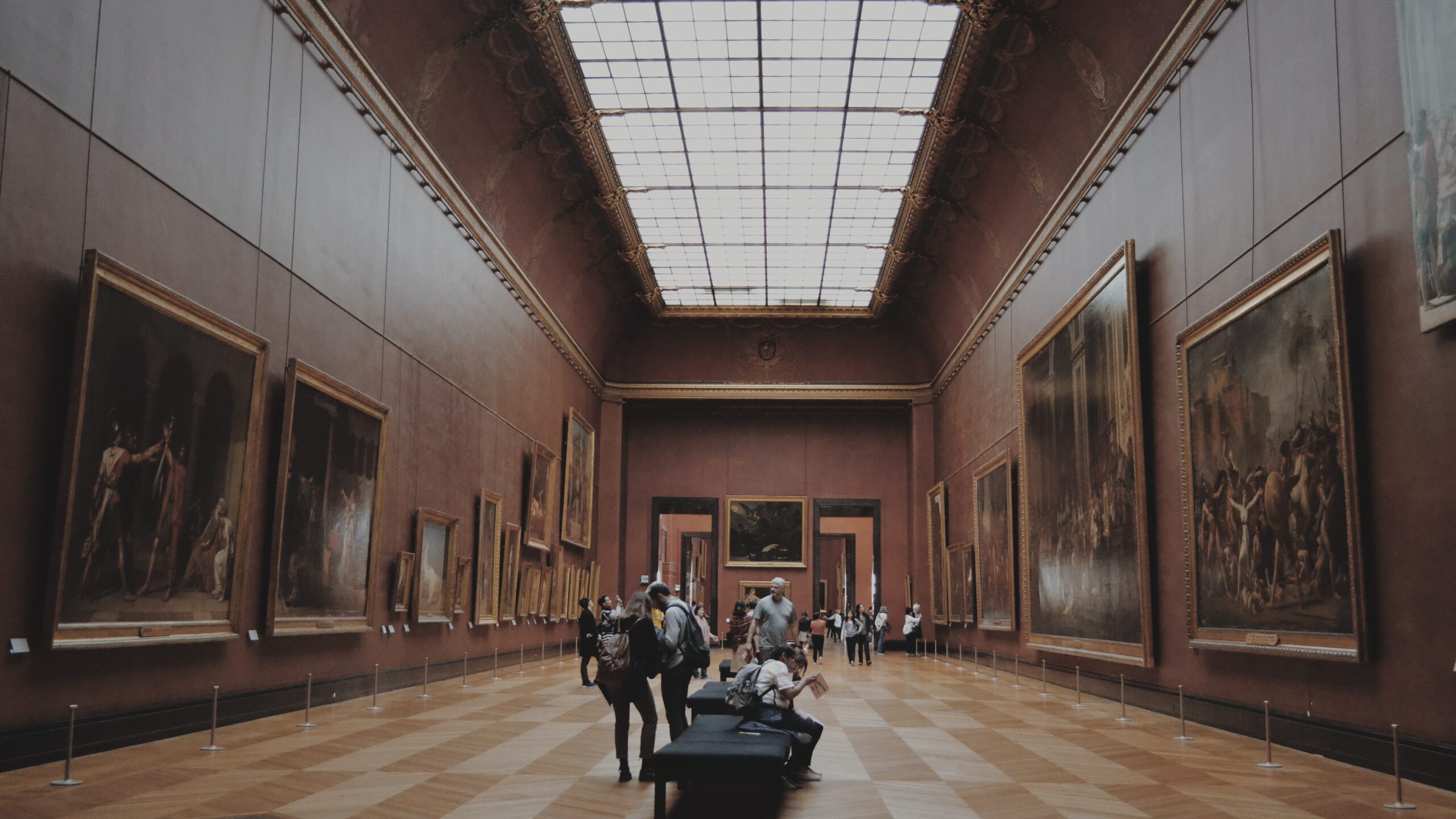Below, we conclude with the latter half of Richard Clements’ piece “Flight from Beauty, Flight from Judgment.” If you have not read Part I, you can do so here.
Our flight from beauty, goodness, and truth has done significant damage to our culture, and it has also been self-defeating for individual members of our culture. At a very basic level, fleeing from the transcendentals has actually thwarted the fulfillment of human desire. This is perhaps the most ironic of the unintended consequences of our flight from beauty, goodness, and truth, since that flight was, at least in part, motivated by a desire to cast off the yoke of judgment associated with the transcendentals in order (supposedly) to be even more free to pursue whatever our hearts might desire. But things have not turned out as intended. As a culture, we have run away from some of the aspects of life that we most fervently desire. Deep down, we all crave beauty, goodness, and truth; indeed, these desires are hard-wired into us. Our hearts and our emotions hunger for beauty, as C.S. Lewis so eloquently described in The Weight of Glory: “We do not want merely to see beauty, though, God knows, even that is bounty enough. We want something else which can hardly be put into words—to be united with the beauty we see, to pass into it, to receive it into ourselves, to bathe in it, to become part of it.” Our wills desire the good; as Aquinas pointed out, even the person committing an objectively evil act typically does so in the pursuit of what he perceives to be a “good” of some sort. And our minds seek the truth, as Aristotle noted when he observed that “all men desire to know.”
Life stripped of beauty, goodness, and truth is a life stripped of meaning and purpose. Is it any wonder that nihilism and “deaths of despair” are on the rise in our society? These are indisputable signs of a diseased culture, a culture in decline. Our abandonment of beauty, goodness, and truth has left us bereft of some of the key aspects of life, aspects that could help us to discern most clearly what “life is all about” and thereby shine a light on our path. Yes, beauty, goodness, and truth “judge” us, but they do so in part because they are meant to point us toward our intended destiny. The transcendentals help us to know who we are: where we came from and where we are meant to be heading. As Scruton would put it, the transcendentals help us know “what to feel and what to do.” But of course, they do far more than that. They give meaning and purpose and direction to our lives. They tell us about the nature of life. They tell us about the nature of being itself. Ultimately, they tell us some key things about the nature and reality of God.
Balthasar wrote extensively of this in his theological masterpiece, his trilogy on beauty, goodness and truth. As he notes, the transcendentals can help us to see that at the core of life, at the core of being itself, lies giving. Beauty gives itself to our senses, our emotions, our hearts. The good offers itself to our wills. Truth gives itself to our minds. Giving lies at the heart of being, because giving lies at the heart of Being, at the heart of God. The essence of God, the essence of divinity, is to give; more specifically, to give the gift of self, which is another way of saying to love. Balthasar beautifully describes the life of the Trinity as an eternal circulation of love, an eternal exchange of the gift of self among Father, Son, and Holy Spirit. Our society tends to think that fullness of life consists in having: the more money you have, the more stuff you have, the more status you have, etc., the happier you will be and the fuller your life will be. In contrast, the transcendentals help us to see that the fullness of life is actually found in giving, not having, for it is in giving that we align ourselves most closely with the deepest, richest life of all: the divine life of God.
At the core of life, at the core of being itself, lies giving.
Our flight from the judgment imposed on us by the beautiful, the good, and the true is, in many ways, a contemporary reenactment of the fall of Adam and Eve. We, like they, have chosen to grasp at divinity: divinity on our own terms, divinity as we conceive divinity to be, rather than as divinity actually is. The essence of divinity is mistakenly conceived of as freedom, and freedom is in turn mistakenly conceived of as total autonomy, as freedom from: freedom from judgment, freedom from rules and laws, freedom from any restrictions whatsoever on the pursuit of one’s desires. John the Evangelist tells us that the essence of God is love, not freedom. And human freedom is intended to be a freedom for, not a freedom from: freedom for excellence; freedom for virtue; freedom for choosing the good; freedom for love; freedom to accept God’s offer of a share in the divine life.
Joseph Ratzinger emphasized the intimate interconnection between our desire for freedom and our desire for a share in God’s divinity in his book Behold the Pierced One:
If man is to be free, he must be ‘like God.’ Wanting to be like God is the inner motive of all mankind’s programs of liberation. Since the yearning for freedom is rooted in man’s being, right from the outset he is trying to become ‘like God.’ Indeed, anything less is ultimately too little for him. . . . Any liberation of man which does not enable him to become divine betrays man, betrays his boundless yearning.
That is our deepest desire: to be united with God, to share in the divine life, to share in God’s own divinity. As human beings, our deepest desire is not for beauty, goodness, or truth, but for the One who is beauty, goodness, and truth. But sharing in God’s divinity is not something we attain by grasping at it. God offers us a share in his divinity as a gift (2 Pet 1:4), and that gift can only be accepted as such. We accept God’s offer of divinization by entering into what Pope St. John Paul II and Pope Benedict XVI called the “dynamic of the gift”: the dynamic of giving and receiving the gift of self in love that is the very essence of the divine life shared among the three Persons of the Trinity. Only within that eternal exchange of love will we find our ultimate fulfillment; and beauty, goodness, and truth help to point the way toward that fulfillment.
Balthasar made the argument, and rightly so, that the best way to bring the Gospel (or, at a minimum, to begin to bring a more transcendent, meaningful vision of life) to a culture that has largely rejected the objectivity of the beautiful, the good, and the true is to lead with beauty. People are generally more likely to be open, both intellectually and emotionally, to claims regarding the beautiful than they are to claims regarding the good or the true, both of which tend to raise more hackles. Part of the power of beauty lies in its capacity to enable us to “encounter meaning in immediate and sensory form” (Scruton again). Thus, our initial focus needs to be on ways in which we can help put the culture back in touch with beauty, in the hope that by helping people open their hearts to the beautiful, we can, in turn, help them open their wills to the good and their minds to the true as well. Balthasar once observed that when we lose touch with one transcendental, we tend to lose touch with the others as well; hopefully this process also works in reverse.

In the area of theology and evangelization, we “lead with beauty” by striving to find ways to present the Christian faith and the Christian way of life in a winsome manner. As Balthasar noted, “Only beautiful theology, that is, only theology which, grasped by the glory of God, is able itself to transmit its rays, has the chance of making any impact in human history by conviction and transformation.” Balthasar managed to transmit many of those rays in his own theological works, as did Pope Benedict XVI. Bishop Robert Barron masterfully depicted the beauty of the Catholic faith in his CATHOLICISM video series, and his Word on Fire ministry has continued to do much good work in this regard.
In the broader culture, we obviously need more artists, sculptors, musicians, writers, architects, film and TV directors, etc. who will strive to produce works of beauty—works that will elevate us, works that communicate a moral vision, works that point us toward transcendence. In this regard, Scruton felt that the work of people like John Wonnacott and David Inshaw (figurative painting), David Del Tredici and Robert Simpson (tonal music), and Quinlan Terry and Léon Krier (classical architecture) offered some hope for the future. In film, I would add the work of Terrence Malick (A Hidden Life; The Tree of Life).
We also need to focus on the aesthetic education of children and young adults, with the aim of cultivating a love of beauty and an ability to savor the beautiful. The emergence of classical academies that focus on the transcendentals is a promising trend, as is the focus on the transcendentals and the classics of the Western canon found at Catholic universities that are striving to be “faithfully Catholic,” including Benedictine College in Atchison, Kansas; the University of Dallas; Franciscan University of Steubenville; Thomas Aquinas College in Santa Paula, California, and Northfield, Massachusetts; and Wyoming Catholic College.
Charles Taylor, with his concept of the “buffered self,” argued that people in modern societies tend to be “buffered” against even the most basic awareness of the presence of the transcendent in their lives. Some of us are heavily buffered; some of us somewhat less so. But we all have buffers that sometimes close us off to an awareness of, and openness to, God’s presence and grace in our lives. Leading with beauty seems like one of the best ways to break through those buffers and help all of us open ourselves more fully to the divine rays of beauty, goodness, and truth that are all around us.
